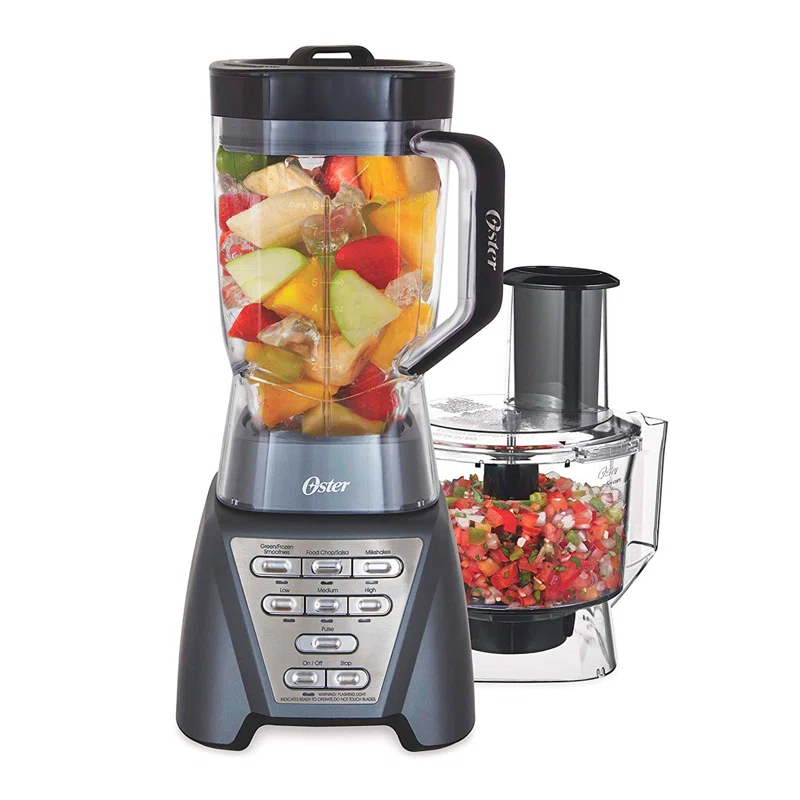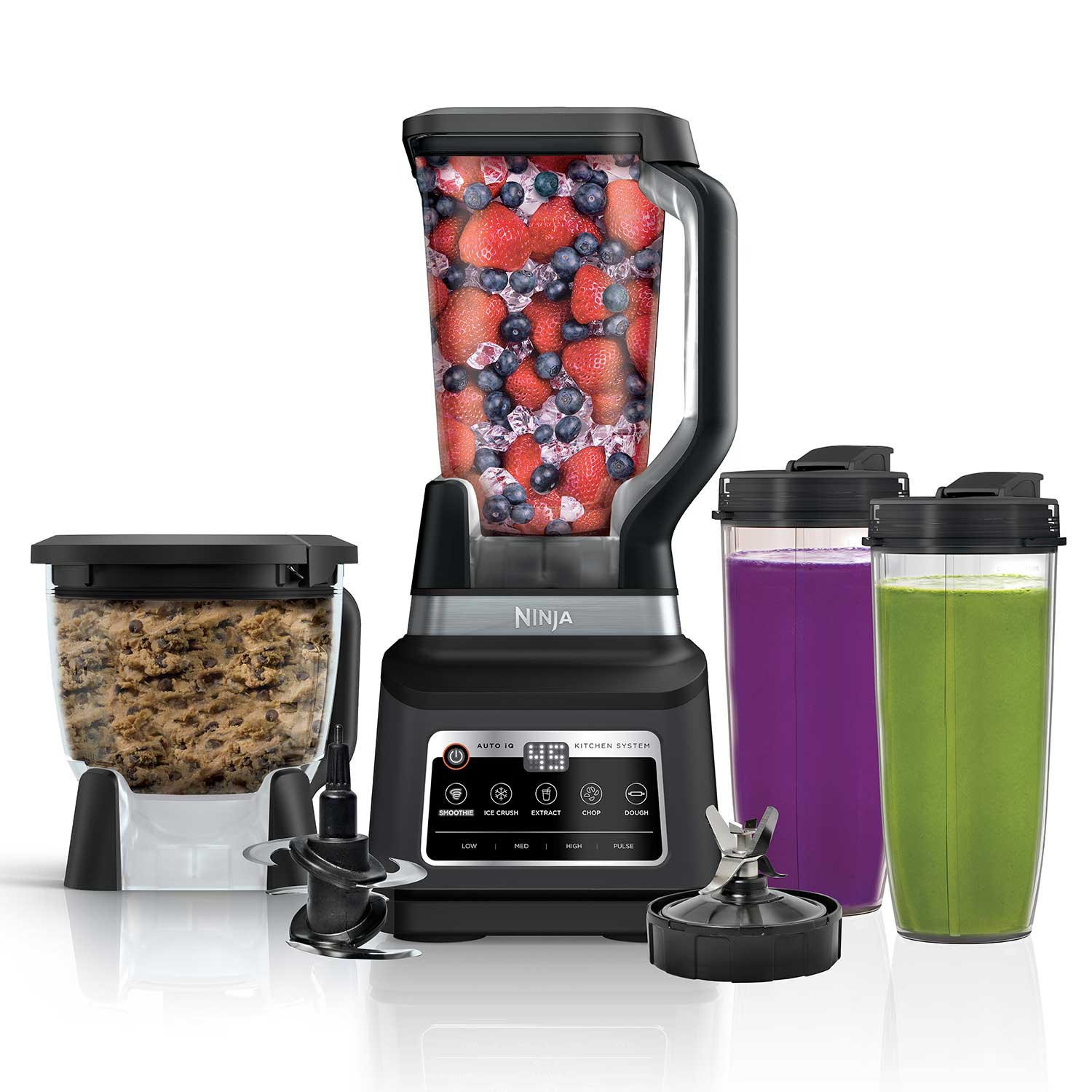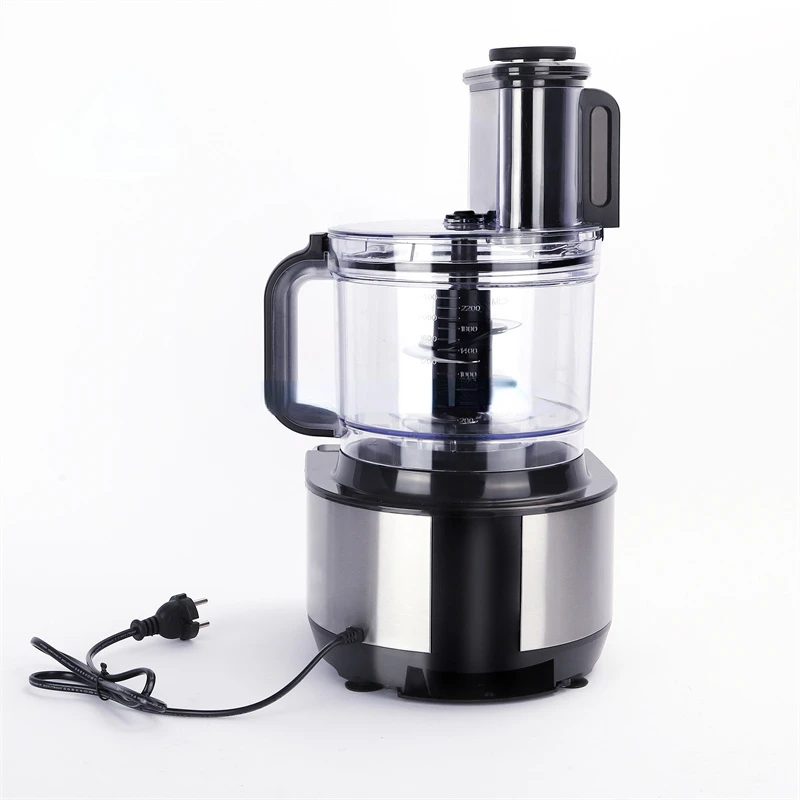
Essential Differences Between Blenders and Food Processors
Understanding the essential differences between blenders and food processors is key before you start using your blender to emulate a food processor. First and foremost, blenders are designed mainly for liquids. They work best with smoothies, soups, and sauces. Blenders have tall containers and a narrow shape. This design helps to pull ingredients downwards. It blends them into a smooth texture.

On the other hand, food processors come with wide, flat containers. They are great for handling solid or semi-solid ingredients without the need for added liquids. Food processors can chop, slice, shred, and knead dough. They use various blades and disks for different tasks. Unlike blenders, they offer more control over the texture of the food. You can achieve anything from a rough chop to a fine mince.
Blenders usually have a single blade. This blade is fixed at the bottom of the jar. The blade’s design makes it less versatile for certain tasks like dough kneading or vegetable chopping. Food processors, meanwhile, have multiple attachments. These attachments cater to diverse food prep needs. They don’t rely on liquid to move food around the bowl. The motor of a food processor is also usually more powerful than that of a blender. This allows food processors to handle tougher tasks.
By considering these differences, you can better judge when ‘can I use my blender as a food processor’ is practical. Remember, while a blender can handle many tasks, it may not replace a food processor entirely. Yet, for smaller kitchens or fewer specialized tasks, understanding these distinctions will help you make the most of your appliances.
How to Use Your Blender as a Food Processor
Transforming your blender for food processor tasks can be quite manageable. With a few tweaks, you can chop, mince, and mix ingredients without the need for a dedicated device. However, it’s important to modify your approach slightly from how you use it for blending liquids.
Preparing Ingredients for Optimal Results
Before using your blender as a food processor, preparation is key. Start by cutting ingredients into smaller, uniform pieces. This ensures even chopping and reduces strain on your blender’s motor. Harder ingredients like carrots may need to be softened slightly by par-cooking. For wetter tasks, like making pastes or dough, it’s best to add liquids slowly. This gives you more control over the consistency. Always use the pulse function to avoid overprocessing and creating too much heat.
Techniques for Blending Different Types of Foods
For dry ingredients, use short bursts at high speed. This technique helps to replicate the chopping action of a food processor. For making dough or batter, use a lower speed to start. This combines the ingredients without over-kneading. Cold ingredients work best for tasks like making butter or pastry, as they prevent the mixture from becoming too warm. When blending tough ingredients, make sure to give your blender breaks. This will prevent motor burnout. Always keep an eye on the texture, stopping when you reach the desired consistency.
Necessary Attachments for Blender Conversion
To effectively use your blender as a food processor, specific attachments are crucial. These tailor the blender’s functionality to more closely mimic that of a food processor. Here are the essential attachments:
- Chopping/Mixing Blade: Unlike the usual blades in blenders, a chopping blade has sharper edges. This makes it suitable for dicing and chopping solid foods.
- Slicing Disc: Attach this disc to cut vegetables and fruits uniformly. It helps in creating perfect slices which are ideal for salads or baking.
- Shredder Disc: Use this for shredding cheese, vegetables, or even chocolate. It provides a quick and efficient way to prepare ingredients for various recipes.
- Dough Blade: While not effective as a stand mixer’s dough hook, this blade can mix and slightly knead doughs for bread or pizza.
- Feeder Tube: A feeder tube allows you to add ingredients gradually. This is essential for maintaining control over the blend and preventing over-processing.
With these attachments, your blender can take on many of the tasks usually reserved for a food processor. Always ensure that the attachments you choose are compatible with your blender model to avoid damage or inefficient processing. By utilizing the right tools, you can enhance your kitchen’s functionality significantly without the need for numerous appliances.
Recipes That Work Best with Blender Food Processing
When using your blender as a food processor, some recipes are better suited than others. Here are a few of the best choices:
- Pesto: The simple combination of basil, garlic, pine nuts, cheese, and oil blends beautifully in a blender. It’s a quick and easy recipe perfect for this appliance.
- Chopped Salads: You can easily chop ingredients for a fresh salad. Add chunks of cucumber, tomato, and onion. Use the pulse mode for best results.
- Salsas: Blend tomatoes, onions, and peppers for a delicious homemade salsa. Again, pulsing is key to avoid overprocessing.
- Hummus: Chickpeas, tahini, lemon juice, and garlic make for a smooth and creamy spread. Ensure the chickpeas are well-cooked for easier blending.
- Pie Crusts: Use your blender to mix flour, butter, and ice water. This makes a flaky crust without overworking the dough.
- Shredded Cheese and Vegetables for Pizza: Perfect for quick meal preparations, shred cheese or slice veggies directly in the blender.
Remember to cut ingredients into smaller pieces for even blending. Also, be mindful of not overfilling the blender to avoid straining the motor. These recipes showcase how versatile your blender can be, turning it effectively into a food processor with the correct approach and attachments.
 Safety Measures and Precautions
Safety Measures and Precautions
Using your blender as a food processor comes with specific safety concerns. Here are key measures and precautions to ensure safety:
- Always Check Attachments: Before each use, make sure attachments are secure. This prevents accidents during operation.
- Avoid Overfilling: Do not fill the blender jar too high. Overfilling can cause leakage or motor strain.
- Use Pulse Carefully: Use the pulse feature cautiously. Pulsing gives better control and prevents the motor from overheating.
- Handle Sharp Blades with Care: Blender blades are very sharp. Handle them with caution, especially when cleaning or assembling.
- Stable Surface: Always place the blender on a stable, flat surface. This reduces the risk of tipping or falling during use.
- Do Not Blend Extremely Hard Materials: Avoid blending very hard ingredients like coffee beans or ice alone. This can damage the blade.
- Keep Lid On: Ensure the lid is securely in place before starting the blender. This prevents any splashes or spillage.
- Unplug When Not in Use: Unplug the blender when not in use or while cleaning. This avoids any accidental starts.
By following these safety tips, you can use your blender as a food processor more securely and effectively.
Maintenance and Cleaning Tips for Blenders Used as Food Processors
Proper maintenance and cleaning are crucial for optimizing your blender’s performance and longevity when used as a food processor. Here are some helpful tips to keep your appliance in top condition:
- Clean Immediately After Use: Always clean your blender right after using it. Residue from food can harden, making it harder to clean later.
- Disassemble for Cleaning: Take apart removable parts like blades and containers. This makes cleaning more thorough.
- Use Warm Soapy Water: Wash blades and containers with warm soapy water. For stubborn residues, use a gentle scrubbing brush.
- Dry Parts Completely: After washing, ensure all parts are completely dry before reassembling. This prevents mold and odors.
- Regular Check-Ups: Periodically check your blender for any signs of wear or damage, especially on the blades and the motor base. Replace parts as necessary.
- Store Properly: Store your blender and its attachments in a dry, cool place. Avoid stacking heavy items on top of the blender.
- Avoid Harsh Chemicals: Don’t use harsh cleaning chemicals that can damage the plastic components of your blender.
By following these simple, practical tips, you can ensure that your blender remains a useful tool for food processing tasks, without the need for frequent repairs or replacements.
 Comparing Efficiency: Blender as Food Processor vs. Traditional Food Processors
Comparing Efficiency: Blender as Food Processor vs. Traditional Food Processors
When considering using a blender as a food processor, efficiency is a key factor. Traditional food processors come with hefty, more powerful motors. This allows them to handle a wider range of tasks more robustly. They can slice, dice, and shred without strain.
However, blenders, when equipped with specific attachments, can mimic these functions. They are most suitable for smaller, less intensive tasks such as making pesto or chopping small vegetables. The main advantage is that blenders take up less space and are typically easier to clean.
Here’s how they compare in terms of specific tasks:
- Chopping: Traditional food processors manage more volume quickly. Blenders require smaller batches and more frequent pauses.
- Dough Making: Food processors handle dough kneading better, thanks to stronger motors and specialized attachments.
- Shredding and Slicing: Food processors come with dedicated disks for shredding and slicing. Blenders can achieve similar results but might not be as uniform.
- Pureeing: Blenders excel at creating smooth purees, especially when liquid is involved. Food processors can also puree but might leave chunks unless thoroughly processed.
In summary, using a blender as a food processor can be efficient for small, specific tasks. For more extensive and diverse kitchen work, traditional food processors are more suitable. They handle heavy-duty tasks with ease and offer more versatility with specialized attachments.





